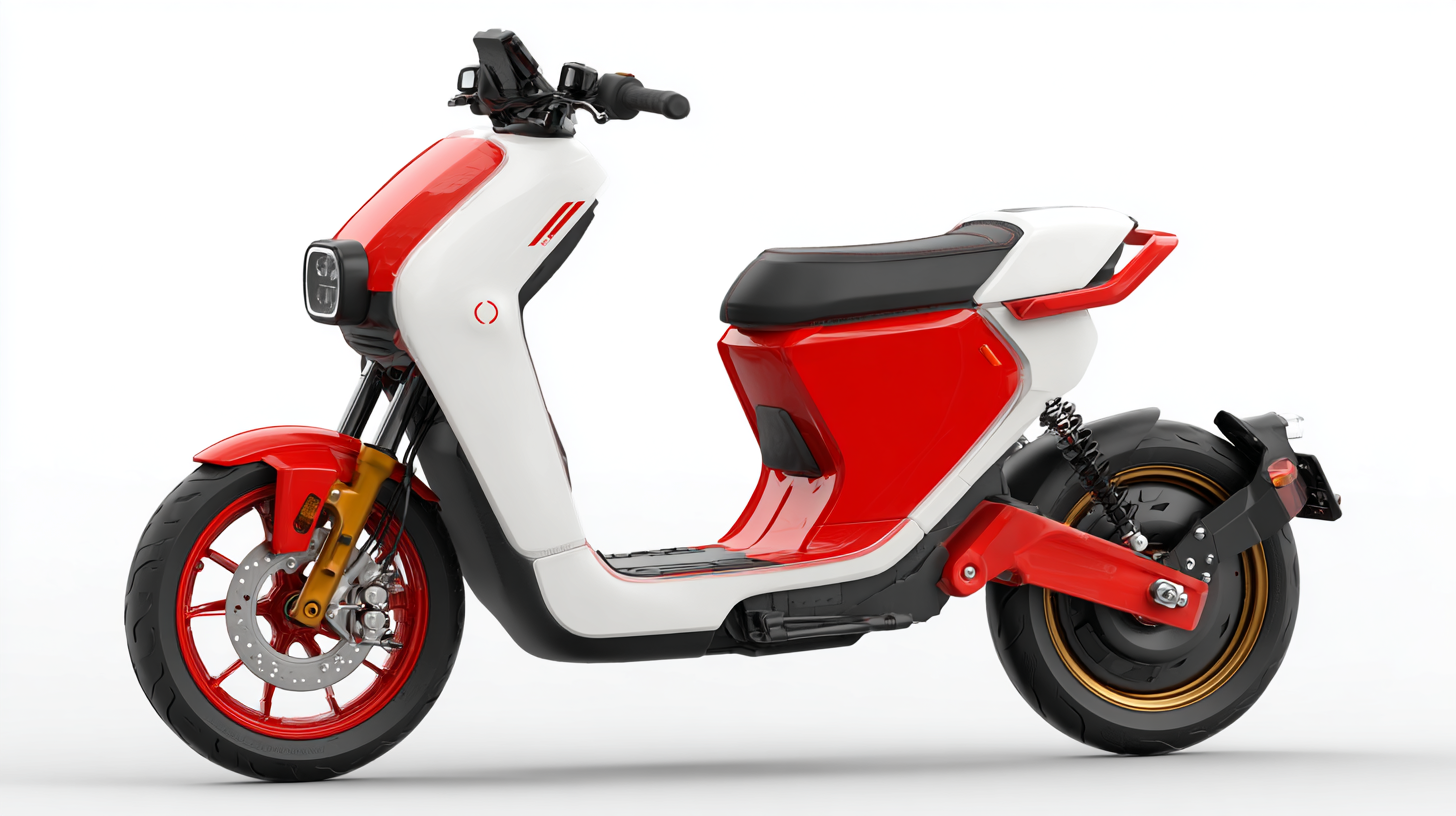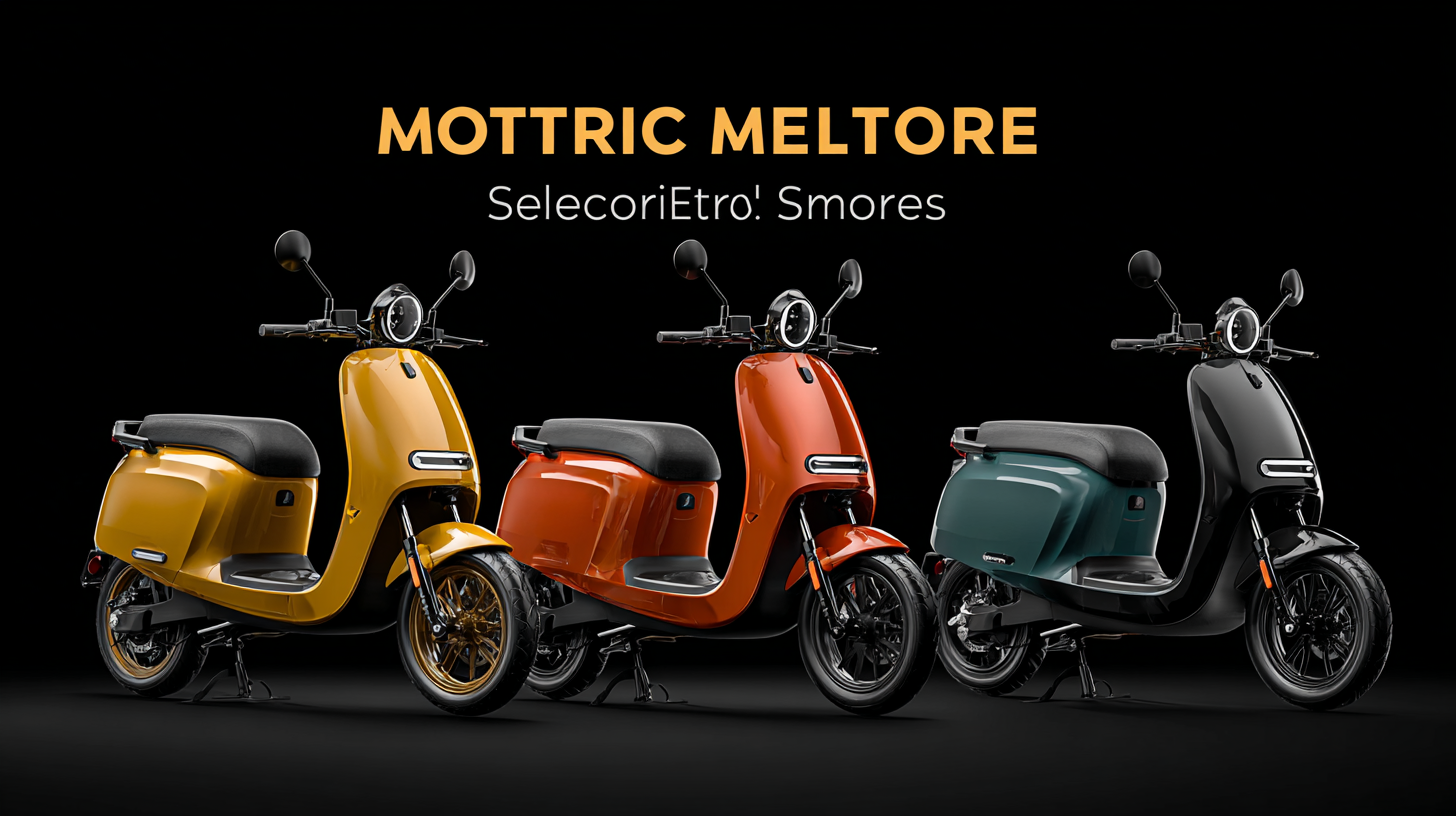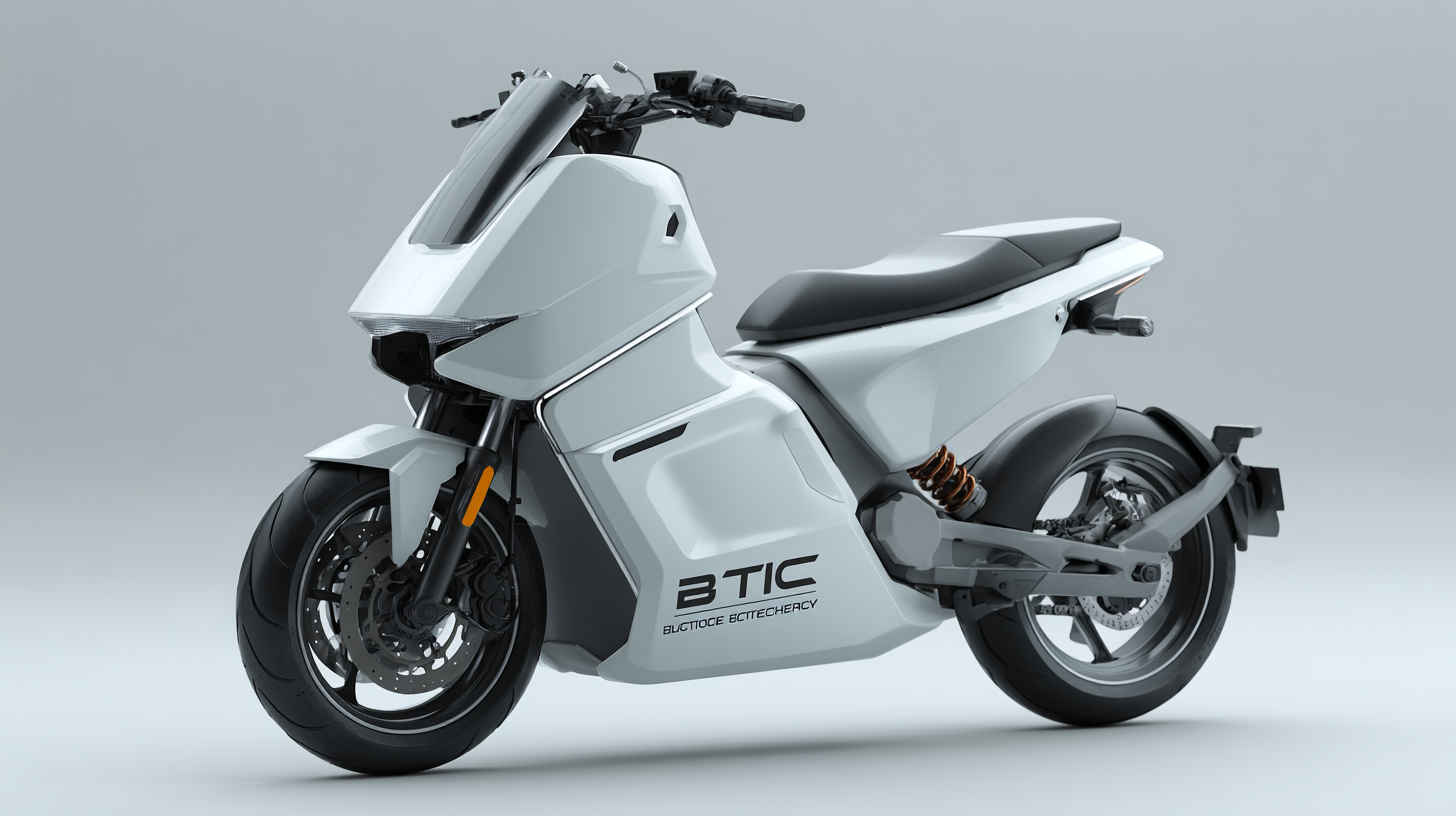The Electric Motorcycles Scooter market is rapidly evolving, driven by technological advancements and a growing emphasis on sustainability. According to a recent report by Fortune Business Insights, the global electric motorcycle and scooter market size was valued at approximately $24 billion in 2021 and is projected to expand at a compound annual growth rate (CAGR) of over 8% through 2025. This growth is fueled by increasing environmental awareness, government initiatives promoting electric vehicle adoption, and advancements in battery technology, enhancing performance and driving range.

As consumers are increasingly seeking alternatives to traditional gas-powered vehicles, understanding the intricate technical specifications and trends in the Electric Motorcycles Scooter sector becomes essential. This blog will delve into the latest offerings, their technical parameters, and practical insights to help navigate this exciting landscape.
The electric motorcycle and scooter market is poised for growth, with many manufacturers focusing on innovative features that cater to comfort, performance, and sustainability. As riders seek versatile options, models like the Heybike Explore are capturing attention with their ability to handle both commuting and off-road adventures. This trend reflects the increasing demand for electric vehicles that do not compromise on experience, making them an appealing choice for urban and rural riders alike.
When considering features for electric motorcycles and scooters, it's essential to look for models that offer good battery life, a comfortable riding position, and advanced safety features. Additionally, riders should pay attention to the weight and overall design, as these factors can significantly affect maneuverability and ease of use. Opting for models with customizable settings can also enhance the riding experience, allowing users to tweak performance based on their preferences.
One key aspect that consumers often overlook is the availability of after-sales service and support. As the electric motorcycle landscape evolves, ensuring that reliable maintenance and repair options are accessible will enhance long-term ownership satisfaction. Investing time in researching user reviews and brand reputation can lead to a more informed decision when selecting the perfect electric scooter or motorcycle for your lifestyle.
As urban environments continue to evolve, the demand for efficient and sustainable transportation solutions is on the rise. Electric scooters and motorcycles have emerged as ideal options for navigating congested city streets. Their compact design and zero-emission capabilities make them perfect for short commutes, reducing both traffic congestion and pollution levels. For instance, city dwellers can easily maneuver through tight spaces and park without the hassle associated with traditional vehicles, enhancing overall mobility in densely populated areas.
Moreover, electric two-wheelers cater to a variety of use cases, from daily commuting to leisure rides and even commercial deliveries. Companies are increasingly utilizing electric scooters for last-mile delivery services, reflecting a shift towards greener logistics. Furthermore, urban dwellers looking for recreational activities can enjoy the freedom of exploring their city on electric motorcycles, promoting a more active lifestyle. As the infrastructure for charging and maintaining electric two-wheelers improves, their popularity is expected to soar, making them a vital component of future urban transportation systems.
The electric motorcycle scooter market is experiencing remarkable growth, driven by advancements in technology and increasing consumer awareness regarding sustainable transportation. As brands strive to capture market share, performance metrics have emerged as key differentiators. Leading electric motorcycle brands are now focusing on three primary performance metrics: range, acceleration, and charging time. These factors not only influence consumer purchasing decisions but also set benchmarks for innovation in the industry.
In a comparative analysis, brands like Zero Motorcycles and Energica stand out for their impressive acceleration capabilities, often reaching 0 to 60 mph in just a few seconds. Meanwhile, brands such as Gogoro prioritize range, offering models that can travel over 100 miles on a single charge, appealing to urban commuters. Additionally, the time taken to recharge batteries has become a critical point of evaluation; several competitors are investing in fast-charging technology, significantly reducing downtime and improving user convenience. As we look toward 2025, it's clear that performance metrics will play a pivotal role in shaping the future of electric motorcycles, guiding consumer preferences and inspiring further technological innovations.
| Metric | Brand A | Brand B | Brand C | Brand D |
|---|---|---|---|---|
| Top Speed (mph) | 120 | 115 | 102 | 110 |
| Range (miles) | 200 | 180 | 150 | 175 |
| Charging Time (hours) | 4 | 3.5 | 5 | 4.5 |
| Weight (lbs) | 350 | 370 | 320 | 360 |
| Price ($) | 12,000 | 11,000 | 9,500 | 10,500 |
When selecting the right electric scooter for your commuting needs, it is essential to consider several key factors. One of the most critical aspects is the range of the scooter. According to the latest market trends, scooters with a range of 40-60 miles are becoming increasingly popular among urban commuters, as reported by a 2023 industry analysis. This range is often sufficient for daily commutes while alleviating concerns about battery life. Additionally, look for models equipped with fast-charging capabilities, allowing you to recharge conveniently during work hours.

Another important consideration is the scooter's weight and portability. Lightweight models under 50 pounds are recommended for easily maneuvering through crowded city streets or public transportation. As the market for electric scooters is poised to grow significantly—projected to reach approximately $30 billion by 2025—manufacturers are increasingly focusing on creating sleek, foldable designs that enhance convenience.
Tips: When testing a scooter, pay attention to the throttle response and braking system. A smooth throttle can enhance your riding experience, while effective brakes ensure safety in unexpected situations. Additionally, research local regulations regarding electric scooters, as specifications may vary by region, affecting your choice.
As we look toward 2025, several key trends are shaping the electric motorcycle market. One of the most significant movements is the increasing emphasis on sustainability and eco-friendliness. Consumers are becoming more environmentally conscious, driving manufacturers to innovate and produce electric motorcycles that are not only more efficient but also made from sustainable materials. Additionally, the integration of advanced technologies, such as smart connectivity features and enhanced battery management systems, is becoming a norm. This tech-savvy approach not only appeals to younger riders but also enhances safety and usability for all.

Another crucial trend is the growing investment in charging infrastructure. As governments and private sectors collaborate on expanding charging networks, the convenience of owning an electric motorcycle is significantly improving. This newfound accessibility will likely attract more consumers to switch from traditional gas-powered bikes to electric alternatives. Furthermore, as battery technology continues to advance, we can expect longer ranges and faster charging times, alleviating range anxiety and making electric motorcycles a practical choice for daily commuting and long-distance rides. These trends not only depict a vibrant future for the electric motorcycle market but also showcase a shift in rider culture towards embracing greener and smarter mobility solutions.
